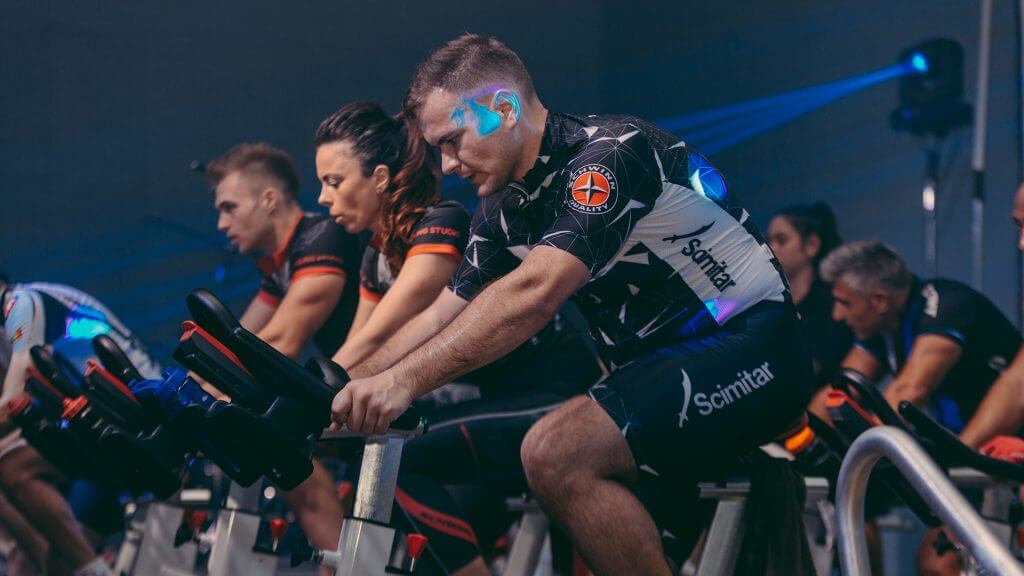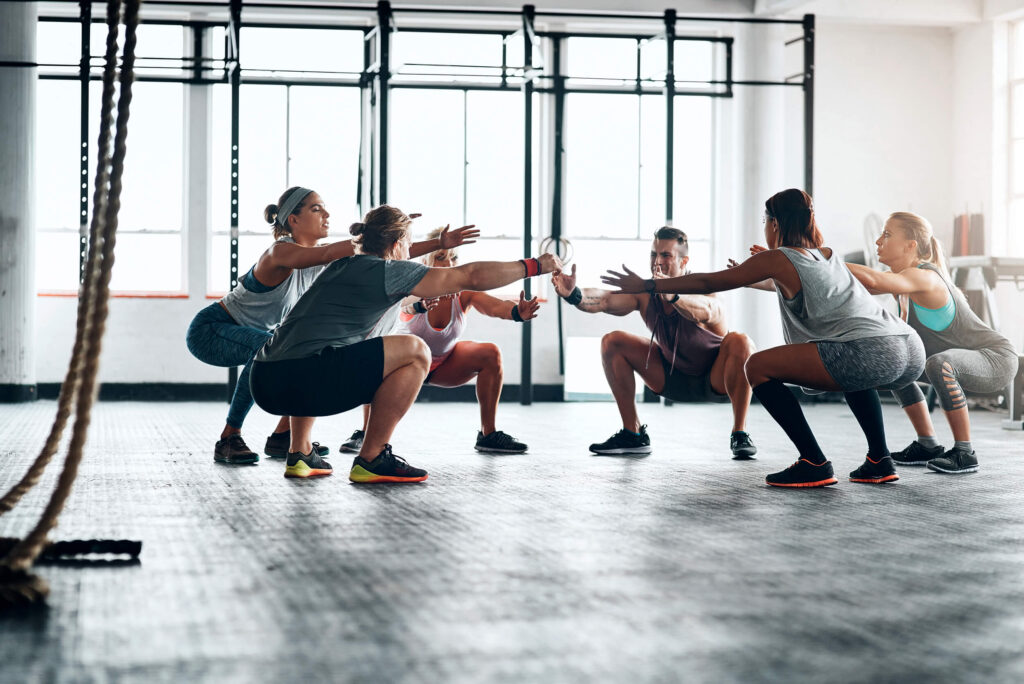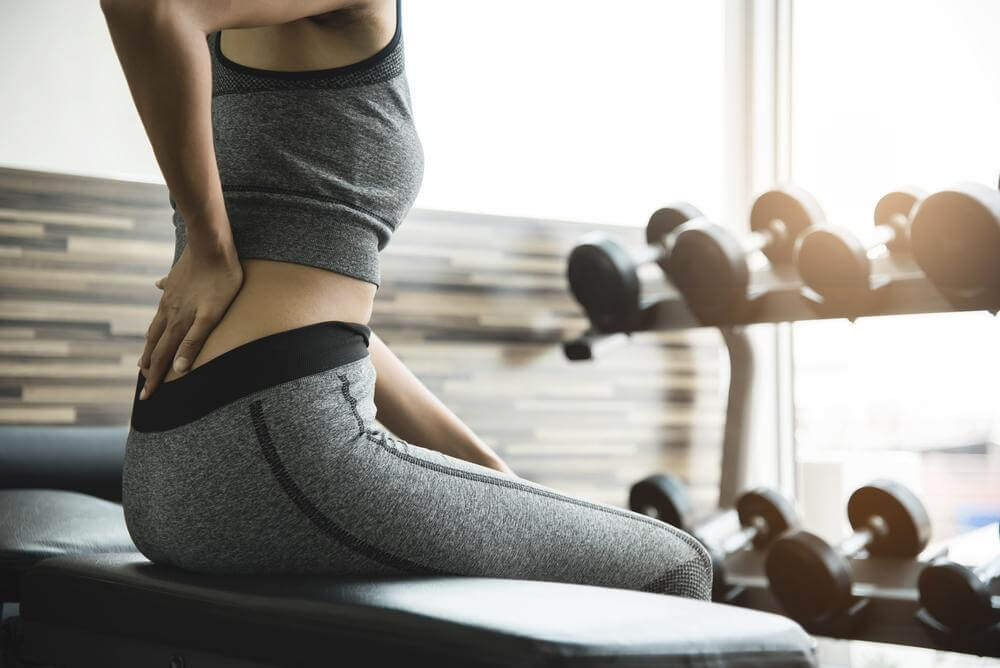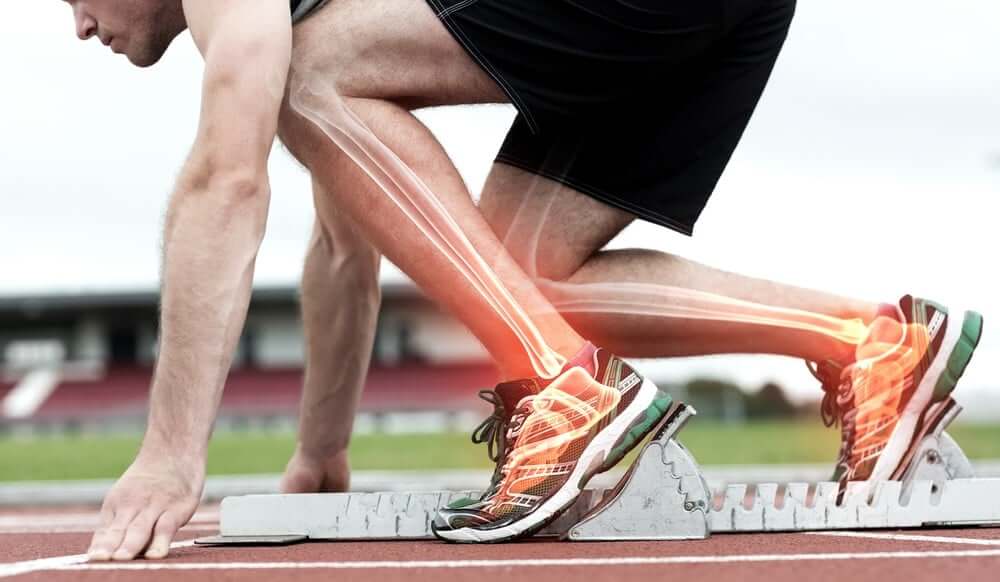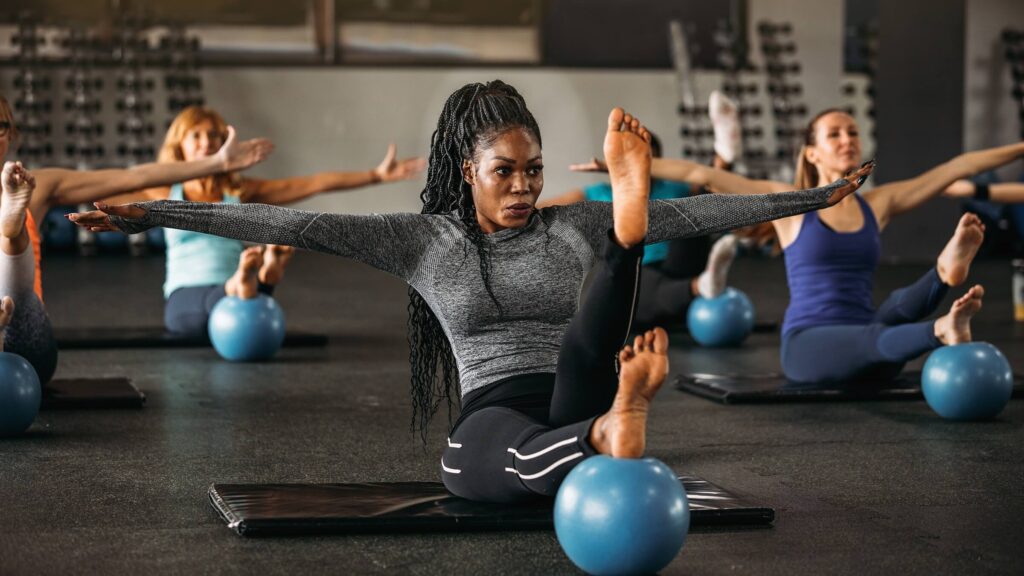
When it comes to physical fitness, there are many types of exercise.
High-impact aerobics is a popular option for people who want to build strength, improve cardiovascular fitness, and burn calories.
However, there are pros and cons to this type of exercise, and it may not be the best choice for everyone.
Finding the right balance between high-impact and low-impact exercises is key to achieving fitness goals while maintaining a sustainable workout routine.
High-Impact Exercises to Try
Here are some examples of high-impact exercises that can help increase bone density, burn calories, and improve cardiovascular fitness:
-
Jumping jacks
-
Side jumping lunges
-
Knee highs
-
Plyometric box jumps
-
Running or jogging
-
High-knee runs
-
Burpees
-
Jumping rope
-
High-impact aerobics classes
-
Sports such as basketball, tennis, and soccer
It’s important to gradually increase the intensity of high-impact exercises and consult a healthcare professional before starting any new exercise program.
Cross-training with low-impact exercises can also help prevent overuse injuries and improve overall fitness.
What is the difference between high-impact, low-impact, and no-impact exercise?
The high-impact exercise involves movements that require at least one foot to leave the ground, creating a sudden impact when landing.
Examples include jumping jacks, running, and plyometric box jumps.
These exercises are generally higher intensity and can burn more calories, but they also put more stress on the joints and increase the risk of injury.
Low-impact exercise involves movements that keep at least one foot on the ground, reducing the amount of stress placed on the joints.
Examples include walking, cycling, and swimming. Low-impact exercises are generally safer and easier on the body but may not burn as many calories or build as much muscle as high-impact exercises.
On the other hand, no-impact exercise involves movements that do not stress the joints at all. Examples include yoga, Pilates, and swimming.
These exercises are ideal for individuals with joint issues or those recovering from an injury, as they provide a low-risk way to improve fitness and flexibility.
However, they may not provide as many cardiovascular or bone-building benefits as high or low-impact exercises.
Finding the right balance between high-impact and low-impact exercises is key to achieving fitness goals while maintaining a sustainable workout routine.
High-Impact Exercises to Try
Here are some examples of high-impact exercises that can help increase bone density, burn calories, and improve cardiovascular fitness:
-
Jumping jacks
-
Side jumping lunges
-
Knee highs
-
Plyometric box jumps
-
Running or jogging
-
High-knee runs
-
Burpees
-
Jumping rope
-
High-impact aerobics classes
-
Sports such as basketball, tennis, and soccer
It’s important to gradually increase the intensity of high-impact exercises and consult a healthcare professional before starting any new exercise program.
Cross-training with low-impact exercises can also help prevent overuse injuries and improve overall fitness.
What is the difference between high-impact, low-impact, and no-impact exercise?
The high-impact exercise involves movements that require at least one foot to leave the ground, creating a sudden impact when landing.
Examples include jumping jacks, running, and plyometric box jumps.
These exercises are generally higher intensity and can burn more calories, but they also put more stress on the joints and increase the risk of injury.
Low-impact exercise involves movements that keep at least one foot on the ground, reducing the amount of stress placed on the joints.
Examples include walking, cycling, and swimming. Low-impact exercises are generally safer and easier on the body but may not burn as many calories or build as much muscle as high-impact exercises.
On the other hand, no-impact exercise involves movements that do not stress the joints at all. Examples include yoga, Pilates, and swimming.
These exercises are ideal for individuals with joint issues or those recovering from an injury, as they provide a low-risk way to improve fitness and flexibility.
However, they may not provide as many cardiovascular or bone-building benefits as high or low-impact exercises.
[/vc_column_text][/vc_column][/vc_row]
In this article, we will explore what high-impact exercise is, what low-impact exercise is, and the difference between high-impact, low-impact, and no-impact exercise.
Pros and Cons of High impact Exercises
Pros of High-Impact Exercises:
-
Burning calories: High-impact exercises are known to burn more calories than low-impact exercises, making them an effective way to lose weight and improve overall fitness.
-
Improving cardiovascular fitness: High-impact exercises can improve cardiovascular fitness by increasing the heart rate and blood flow.
-
Building power: High-impact exercises can help build capacity and strength in the muscles and bones.
-
Gradually increasing fitness level: Increasing the intensity and duration of high-impact exercises can help individuals build endurance and improve overall fitness.
Cons of High-Impact Exercises:
-
Risk of injury: High-impact exercises can be challenging on the joints, and there is an increased risk of injury, especially for individuals with joint issues or overuse injuries.
-
Too much stress: Regularly subjecting the body to high-impact exercises can lead to too much pressure on the body, causing pain or discomfort.
-
Difference between high and low impact: The abrupt stress created by high-impact exercises can be too much for some individuals to handle. They may need to start with low-impact exercises before progressing to high-impact.
-
Recovery time: High-impact exercises can cause muscle soreness, and it may take longer to recover from high-impact workouts than from low-impact activities.
Overall, high-impact exercises can be an effective way to improve fitness. Still, they should be performed cautiously and with the guidance of a personal trainer or physical therapist to prevent injury.
What is high-impact training?
High-impact training refers to a type of workout that involves performing high-impact exercises in a structured and intense way.
This type of training can be used to improve overall fitness, build strength, and burn calories. High-impact exercise is often used by athletes, fitness enthusiasts, and individuals looking to challenge themselves physically.
During high-impact training, individuals perform exercises that involve abrupt movements, such as jumping jacks, knee highs, and side jumping lunges.
These exercises are performed at a high intensity and are often combined with other activities, such as strength training or cardiovascular exercises. High-impact training aims to push the body to its limits and improve overall fitness.
How do I know if high-impact exercise is safe for me?
High-impact exercise can be a great way to challenge yourself and improve your fitness level.
However, it’s essential to ensure that it’s safe for you to engage in this type of activity before you begin. Here are some things to keep in mind when considering high-impact exercise:
-
Talk to your doctor: It’s always a good idea to consult before beginning any new exercise program, especially if you have any medical conditions or concerns.
-
Consider your fitness level: High-impact exercise can be very demanding on the body, so it’s essential to ensure you have a solid fitness foundation before you begin. If you’re new to exercise, it’s generally recommended to start with low-impact activities and gradually build up to higher-impact exercises.
-
Check for joint issues: High-impact exercise can put a lot of stress on your joints, so it’s essential to check for any problems that this type of activity could aggravate. If you have a history of joint issues, you should speak with your doctor or a physical therapist for their input.
-
Start slow: Even if you’re in great shape, it’s essential to start with a lower intensity and gradually increase the duration and intensity of your high-impact workouts. This will help you avoid injury and ensure that your body can recover properly.
By considering these factors and taking a gradual approach to high-impact exercise, you can safely and effectively incorporate this type of workout into your fitness routine.
What is low-impact training?
Low-impact training is a form of exercise that involves minimal jumping or bouncing movements and has less stress on your joints than high-impact exercises.
Low-impact exercises are perfect for those with joint issues or injuries or who want to avoid the intense stress on their joints that high-impact activities can cause.
Low-impact exercises include walking, cycling, swimming, and yoga.
These exercises are beneficial for improving cardiovascular fitness, building strength, and burning calories without putting excessive strain on your joints.
One of the main benefits of low-impact exercise is that it is generally considered safer than high-impact exercise. This makes it an excellent choice for people just starting a new exercise routine, recovering from an injury, or dealing with joint issues.
Additionally, low-impact exercise can still provide a challenging workout tailored to your fitness level, making it an excellent choice for people of all ages and abilities.
Overall, low-impact exercise is an excellent option for those looking for a safe and effective way to improve their fitness without putting undue stress on their joints.
Low Impact: Slower Results, Easier on the Body
Low-impact exercises are safer and easier on the body than high-impact exercises. Although they may not burn as many calories or build as much muscle, they can still provide significant benefits, such as improving cardiovascular fitness and increasing strength.
Incorporating low-impact exercises like walking, cycling, and swimming into a workout routine can prevent overuse injuries and improve overall joint health.
Finding the right balance between high-impact and low-impact exercises is key to achieving fitness goals while maintaining a sustainable workout routine.
High-Impact Exercises to Try
Here are some examples of high-impact exercises that can help increase bone density, burn calories, and improve cardiovascular fitness:
-
Jumping jacks
-
Side jumping lunges
-
Knee highs
-
Plyometric box jumps
-
Running or jogging
-
High-knee runs
-
Burpees
-
Jumping rope
-
High-impact aerobics classes
-
Sports such as basketball, tennis, and soccer
It’s important to gradually increase the intensity of high-impact exercises and consult a healthcare professional before starting any new exercise program.
Cross-training with low-impact exercises can also help prevent overuse injuries and improve overall fitness.
What is the difference between high-impact, low-impact, and no-impact exercise?
The high-impact exercise involves movements that require at least one foot to leave the ground, creating a sudden impact when landing.
Examples include jumping jacks, running, and plyometric box jumps.
These exercises are generally higher intensity and can burn more calories, but they also put more stress on the joints and increase the risk of injury.
Low-impact exercise involves movements that keep at least one foot on the ground, reducing the amount of stress placed on the joints.
Examples include walking, cycling, and swimming. Low-impact exercises are generally safer and easier on the body but may not burn as many calories or build as much muscle as high-impact exercises.
On the other hand, no-impact exercise involves movements that do not stress the joints at all. Examples include yoga, Pilates, and swimming.
These exercises are ideal for individuals with joint issues or those recovering from an injury, as they provide a low-risk way to improve fitness and flexibility.
However, they may not provide as many cardiovascular or bone-building benefits as high or low-impact exercises.
[/vc_column_text][/vc_column][/vc_row]
